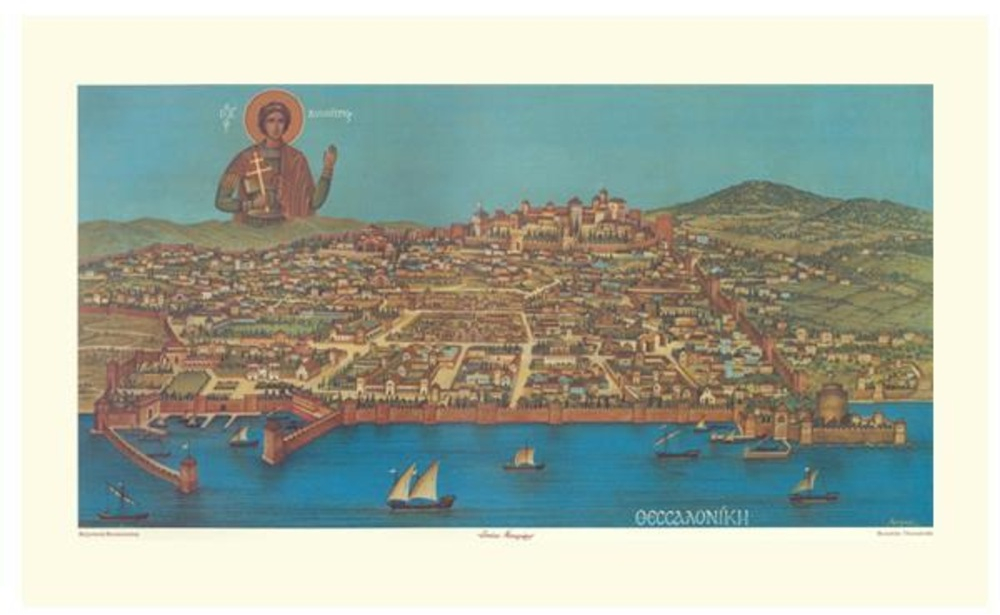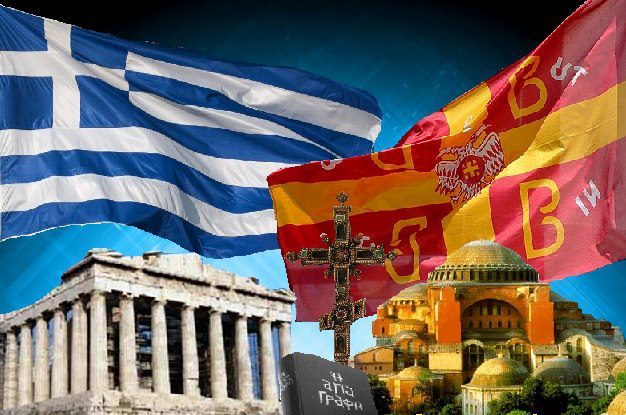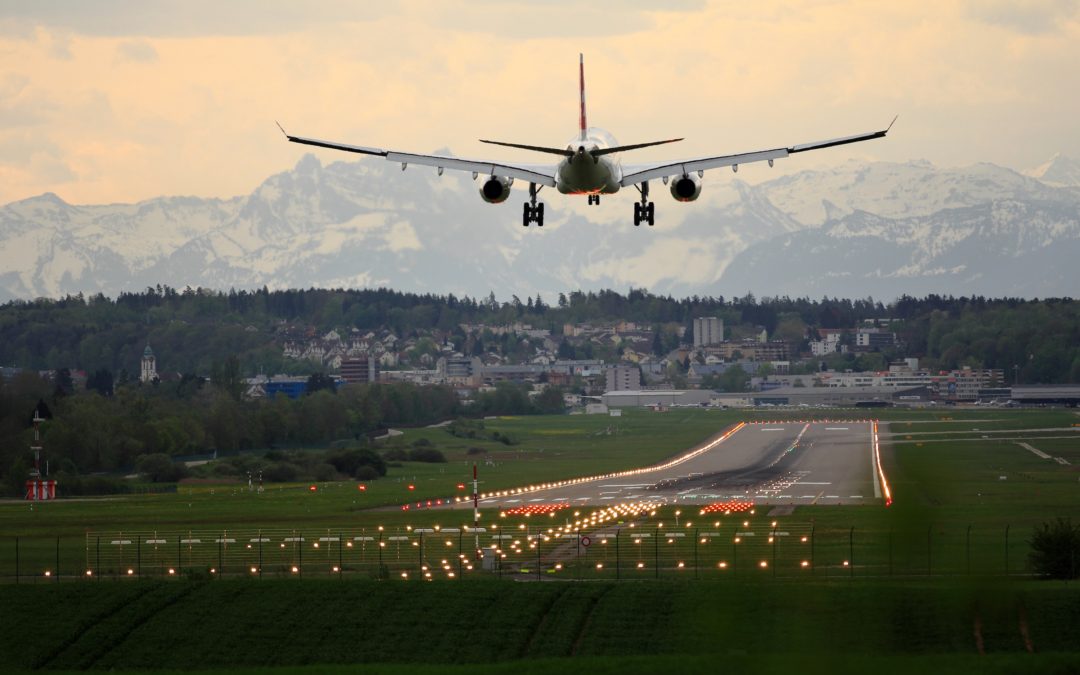We are a people with a continuous and unbroken historical presence for more than 4,000 years. Besides the continuity of blood (which has secondary importance), we mainly have an uninterrupted cultural continuity. We, the Greek people, have a distinguishing characteristic over the other civilizations, that we’ve undergone great historical maturation and evolution. This can already be seen as we progressed from our society-centric before-Christ civilization (that is, of examining the relationship of humans as truth and as something of greatest importance) to a new civilization, the Romeiko (Gr: Ρωμαίικο) civilization. This civilization emerged after successive fermentations within the Eastern Roman Empire and was essentially founded on the rebirth of the Hellenistic tradition and culture from the faith in Christ resurrected in the flesh. In other words, the key and the living breath of this new civilization was Orthodoxy. From the narrow Hellenism of the nation, we passed onto Romeosyne (Gr: Ρωμηοσύνη)
The meaning of Romeosyne is wider than the meaning of Hellenism. Hellenism is contained inside Romeosyne, but Romeosyne is a much wider concept, with ecumenical dimensions, and involves different requests and directions. Our identity, the Romeike (Gr: Ρωμαίικη) identity was progressively developed in the first centuries AD, but became completely distinct in the late fourth century, and mainly after Constantine the Great, the Edict of Milan that granted freedom of religion, and the move of the capital to New Rome/Constantinople. The Eastern Roman Empire or Romanía (the empire that wrongly and deceitfully came to be known as the Byzantine Empire) with Constantinople as its capital, now understands itself as the single, integral, undivided, ecumenical, organized Christian state on Earth. Its axis, its objective, its reason for existing, and its directive becomes the “embodiment of the Logos,” living the Kingdom of God not in an abstract, vague, hopeful, metaphysical dimension, but in action, in everyday life. This vision and axis give meaning to the life of the Romeoi people (the wrongly characterized as Byzantines; Gr: Ρωμηοί) both in the individual as well as the collective levels.
For 1500 years, up until about 1830, our collective, our Genos (sic), the Genos of the Romeoi, despite its failures and vacillations, fought freely and proudly to defend its uniqueness. Our ancestors’ countless fights and sacrifices molded and equated our people with the historical path of the Church of the Christ, resurrected in the flesh. The Romeoi people fought and sacrificed their lives lovingly and proudly in the name of the Christ and Orthodoxy, declaring the existence of light in the darkness of this world. It’s incredibly important and should be noted here that in the first Constitution of Greece (the Constitution of Epidaurus, January 1822), Greeks are defined as the citizens of the land that “believe in the Christ.”
The Romeoi body, comprised by the Romeoi that came before, the ones that now live, and those that are coming in every age, is perpetually walking alongside the Saints and the Theotokos towards the end/telos (the objective and completion) of history. The knowledge of the end, the coexistence and immediate communion with the Saints, the resurrection in the flesh of the Christ, and His affirmation of Orthodoxy that “the gates of Hades will not prevail against it,” have constituted and constitute the source of the final victor’s unyielding optimism and faith, despite all the bleak events and circumstances.
Romeosyne is a tradition that is distinct and completely different from the others. Romeosyne does not belong to the West, nor to the East. In truth, what we consider as West and East became meaningful and defined as cultural entities through their conflict with the preexistent Romeiko civilization. What happened was that many people encountered Romanía and its civilization. Many of them accepted that civilization, and based on their own unique characteristics, they developed their own tradition, like the Russian Tradition. Other peoples, though, despite encountering and getting to know the Romeiko civilization, showed an inability to understand it, and thus they not only rejected it, but also created their own misconceptions and cultural aberrations that to this day oppose the Romeiko civilization and torture humanity.
In the West, the Franks and the other Germanic peoples, uncivilized tribes, created a culture based on the instinctual love to one’s own self and one’s own interests. They also transformed the Church of the Christ into the bad copy of the Frankish Church, the one that today is wrongly called the Roman Catholic Church (since it’s neither Roman nor Universal, which is the etymological meaning of Catholic). The barbarity of the Germanic peoples and the deformed Frankish Church with its many differentiations and secessions (protestation, etc.) formed what we historically call the western “civilization.” A “civilization” based exclusively on self-interest, on profit, and the selfishness of power, a “civilization” that makes and for centuries has been making humanity suffer bitterly. Many examples come to mind: the obscurantism of feudalism, the destruction of Romanía in 1204 and the Francocracy that followed, the Holy Inquisition, the annihilation of the peoples of America, the slave trade, colonialism, racism and the complete lack of respect for anything different, the two world wars and uncountable peripheral wars, the destruction of the environment, and the inhuman jungle of the unbridled, corporatist capitalism that we live in today. It’s completely clear that Romeosyne never belonged nor currently belongs in, nor has anything to do with what we call the West.
Romeosyne, however, also has nothing to do with the East where the prevailed civilization is nothing but a simplistic yet cruel jurisprudence, with a meager to nonexistent metaphysics, guided by carnal and hedonistic visions.
Romeosyne fought and still fights both with the East as well as the West, whose longstanding demand remains the annihilation of every different civilization, and especially the Romeiko civilization, which they exploited and warped. The last 190 years, the situation has become more complex and harder, since an external disorientation and confusion has befallen the Romeosyne, leading it to multiple invalidations, and our Genos to the brink of complete dissolution, as we experience today.
We all realize that we are in an important historical moment, as a collective but also as the whole of humanity. We, our Genos, who bear our Romeosyne, we should turn to Romeosyne again, let’s turn to it and let’s baptize ourselves once more in the heart of Romeosyne, which is the immutable light of the Theanthropy (God-man’s union as a new ontological status), and also, our ancestors’ millennia of historical experience. In every age, Romeosyne gives the correct answers for mankind with acuteness. Let’s hug our mother once again, then, let’s hug our Romeosyne once again, and let’s fear nothing. Have courage, then, have courage, People of God.
Ioannis Kon. Neonakis
Head of Romeosyne Section of NIKI
romiosynh@nikh.gr
Photo: Hagia Sophia in Constantinople from the archive of Mr. Avraam Kostidis.
Notes: (a) The term “Romeosyne” was preferred over the term “Romanitas” as it better expresses the culture of the Empire after the prevalence of Christianity and (b) due to more correct phonological rendering and for simplification, the term “Romeoi” was preferred over the term “Rhomaioi”.
Related posts
-
Thessaloniki: New Capital, New Signification, New HorizonRomeosyne 27 September 2025



